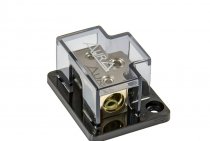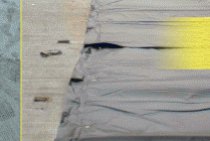General properties of polypropylene
According to DIN 8078 part 3, the following types of polypropylene are distinguished:
Type 1: PP-H (homopolymer)
Type 2: PP-B (block copolymer)
Type 3: PP-R (non-structured polymer)
As a result of copolymerization with ethylene, type 2 and type 3 polypropylene acquired special properties that made it possible to improve the manufacturability of the manufacturing process (for example, to achieve lower shrinkage), as well as higher hardness compared to PP-H.
Physiologically non-toxic.
Due to its composition, polypropylene material is approved for use in the food industry (According to QNORM B 5014, Part 1, BGA, KTW Guidelines).
AGRU pipes, sheets and round bars have been produced from PP-H since the mid-seventies.
Fittings have been produced in PP-R since the late seventies.
Both types have been stabilized against high temperatures and are the best materials for pressure pipe systems.
Compared to other thermoplastics such as PE-HD and PVC, PP shows thermal stability up to 100°C
(short-term single up to 120°C for systems with lower pressure).
PP shows good impact strength compared to PVC.
Impact strength is temperature dependent, increasing with increasing temperature and decreasing with decreasing temperature.
Advantages of polypropylene:
- Low specific gravity 0.91g/cm3
- High resistance to plastic deformation
- Excellent chemical resistance
- Pigmentation with titanium dioxide
- High resistance to aging due to thermal stabilization
- Easy to weld
- Excellent friction resistance
- Smooth inner surface of the pipes, so no deposits and build-ups are formed
- Due to the low frictional resistance, there is less pressure loss compared to metals
- Non-conductive, so the structure does not change when exposed to electricity
- Very technological in the manufacture of products
- PP has a very low thermal conductivity, so in most cases no additional thermal insulation is required for heat transfer pipe systems.
Behavior in radioactive radiation.
In general, PP is not resistant to prolonged exposure to high energy radiation. Resistance to short-term exposure to high-energy radiation is due to the presence of intersecting bonds of the molecular structure. But with prolonged exposure to radiation, these bonds are broken and therefore the resistance of the material to radiation is significantly reduced. Therefore, it is necessary to limit the time of exposure to radiation, and this time is determined experimentally. With a dose of radiation
Behavior under UV radiation.
Gray polypropylene piping is not UV-resistant, so it must be adequately protected. Effective protection against direct solar radiation is provided by a special AGRU coating or insulation. In addition, surface damage can be compensated for by a corresponding increase in wall thickness, since damage occurs only at the surface. The increase in wall thickness must be at least 2 mm. Because polypropylene usually does not contain permanent color pigments, it can cause discoloration when exposed to the weather for a long time. As an alternative, black PE-HD having a high temperature resistance can be used. Specific application conditions must be agreed with the technical department.
2 Normative references
This standard uses references to the following normative documents.
SNiP 2.04.01-85* Internal water supply and sewerage of buildings
SNiP 3.05.01-85 Internal sanitary systems
SNiP 21-01-97* Fire safety of buildings and structures
SNiP 41-01-2003 Heating, ventilation and air conditioning
SP 40-101-96 Design and installation of pipelines made of polypropylene "Random copolymer"
GOST 12.1.005-88 SSBT. General sanitary and hygienic requirements for the air of the working area
GOST 12.1.007-76 SSBT. Harmful substances. Classification and general safety requirements
GOST 12.3.030-83 SSBT. Processing of plastics. Safety requirements
GOST 2226-88* Paper bags. Specifications
GOST 8032-84 Preferred numbers and series of preferred numbers
GOST 10354-82* Polyethylene film. Specifications
GOST 10708-82 Pendulum headframes. Specifications
GOST 11262-80 Plastics. Tensile test method
GOST 11645-73 Plastics. Method for determining the melt flow index of thermoplastics
GOST 12423-66 Plastics. Conditions for conditioning and testing samples (samples)
GOST 13511-2006 Corrugated cardboard boxes for foodstuffs, matches, tobacco products and detergents. Specifications
GOST 14192-96 Marking of goods
GOST 15150-69* Machines, instruments and other technical products. Versions for different climatic regions. Categories, conditions of operation, storage and transportation in terms of the impact of climatic environmental factors
GOST 18599-2001 Polyethylene pressure pipes. Specifications
GOST 21650-76 Means of fastening packaged cargoes in overpacks. General requirements
GOST 24157-80 Plastic pipes. Method for determining resistance at constant internal pressure
GOST 26277-84 Plastics. General requirements for the manufacture of samples by mechanical processing
GOST 27077-86 Connecting parts made of thermoplastics. Methods for determining the change in appearance after warming up
GOST 27078-86 Thermoplastic pipes. Methods for determining the change in the length of pipes after heating
GOST R 50825-95 (ISO 2507-72) Pipes and fittings from unplasticized polyvinyl chloride. Vicat softening point determination
GOST R 51613-2000 Pressure pipes made of unplasticized polyvinyl chloride. Specifications
GOST R ISO 3126-2007 Plastic pipelines. Plastic elements of the pipeline. Sizing
GOST ISO 4065-2005 Thermoplastic pipes. Table of universal wall thicknesses
GOST ISO 11922-1-2006 Thermoplastic pipes for transportation of liquid and gaseous media. Dimensions and tolerances. Part 1. Metric series
GOST ISO 12162-2006 Thermoplastic materials for pressure pipes and fittings. Classification and designation. safety factor
(Revised edition, Rev. No. 1).

